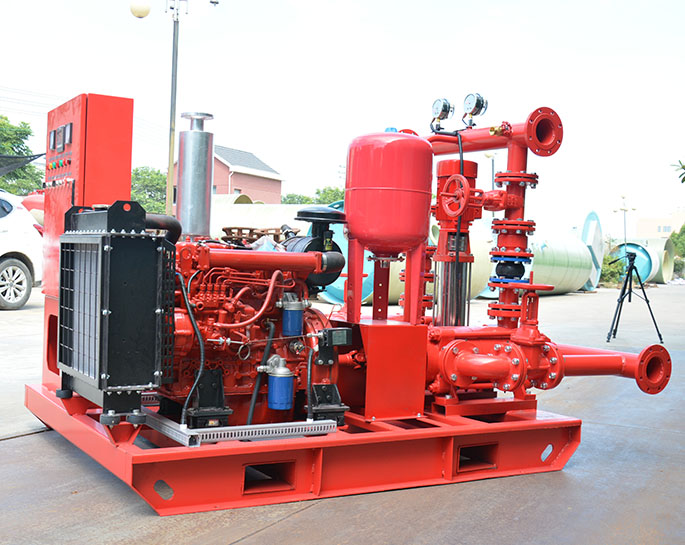Knowledge about fire pump installation
Installing a fire pump is a critical step in setting up an effective fire protection system. Proper installation ensures that the pump operates reliably during emergencies. Here are the key steps and considerations for fire pump installation:
-
Location: Choose a suitable location for the fire pump. It should be easily accessible for maintenance and repair work. The installation site should also comply with local building codes and NFPA 20 regulations.
-
Foundation: Construct a solid and level foundation for the fire pump. The foundation should be capable of supporting the pump's weight and preventing vibrations that could affect its operation.
-
Piping and Connections: Properly install the suction and discharge piping, as well as all required connections. Use appropriate materials and ensure that piping is adequately supported to prevent stress on the pump and minimize pressure losses.
-
Suction Source: If the pump draws water from an external source, ensure that the suction arrangement is properly designed to prevent air leaks and cavitation. Use strainers or filters to prevent debris from entering the pump.
-
Alignment: Properly align the pump and its driver (such as an electric motor or diesel engine) to ensure smooth operation and minimize wear on components.
-
Electrical Connections: If the pump is electrically driven, connect the motor to the power supply following electrical codes and safety practices. Install proper protection devices like circuit breakers and disconnect switches.
-
Priming System: If the fire pump is not self-priming, install a priming system that ensures the pump and suction piping are filled with water before operation.
-
Testing and Commissioning: Conduct thorough testing of the fire pump system before it's commissioned. This includes flow testing, pressure testing, and performance verification. Ensure that the pump operates within the specified parameters.
-
Instrumentation and Controls: Install pressure gauges, flow meters, and other instrumentation as needed to monitor the pump's performance. Set up control systems that allow for manual and automatic pump activation.
-
Ventilation: If the pump room is enclosed, provide proper ventilation to dissipate heat generated by the pump and its driver. Adequate ventilation prevents overheating and ensures safe operation.
-
Safety Considerations: Install safety features such as pressure relief valves, temperature sensors, and emergency shutdown systems to protect the pump and prevent potential hazards.
-
Documentation: Maintain accurate documentation of the installation process, including diagrams, schematics, and manufacturer's recommendations. This information is crucial for future maintenance and troubleshooting.
-
Regular Maintenance Schedule: Develop a maintenance schedule and plan for regular inspections, testing, and preventive maintenance. Proper maintenance ensures the pump remains operational and reliable over time.
-
Compliance with Regulations: Ensure that the fire pump installation adheres to local building codes, fire codes, and relevant standards such as NFPA 20.
Fire pump installation is a complex process that requires expertise in fire protection engineering, plumbing, electrical work, and mechanical systems. It's recommended to involve experienced professionals who are knowledgeable about fire pump systems to ensure a safe and effective installation.


.png)
.png)

.png)


